Volume 1, Number 67 - Monday, July 17, 2023
Published twice a week, on Monday and Thursday
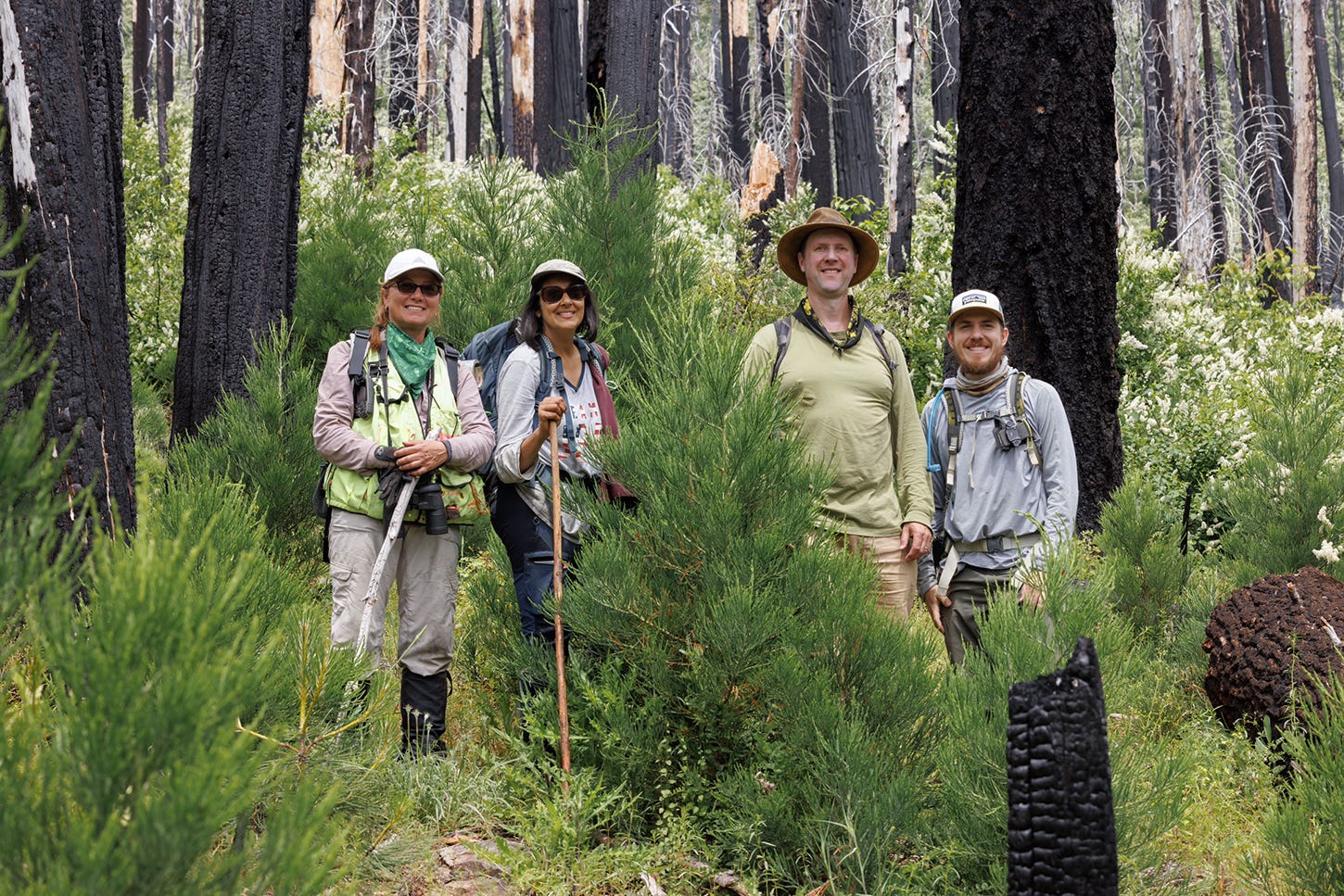
Perspective
TWO ENVIRONMENTAL GROUPS have filed suit against the Forest Service, claiming that it failed to adequately consider the environmental impacts of a plan for logging and other activities to reduce the risk of fire on a portion of Sierra National Forest.
The suit was filed last Thursday afternoon, July 13, by Earth Island Institute and Sequoia ForestKeeper. Chad Hanson of Earth Island Institute’s John Muir Project provided me with a copy of the complaint this morning.
You may recall that the Forest Service — on both Sierra and Sequoia national forests — has been engaged since last summer with what it calls emergency response to giant sequoia groves. I’ve previously covered some of the work being done in the groves.
In the decision memo for emergency response signed by Forest Service Chief Randy Moore nearly a year ago, Jennifer Eberlein, regional forester for Pacific Southwest Region, wrote:
Public scoping and tribal engagement (for some similar projects) have indicated strong support for fuels reduction treatment in giant sequoia groves, though some have expressed concern with using mechanical equipment within the groves and removal of trees between 8 to 20 inches dbh.
Eberlein, Moore and Forest Supervisor Dean Gould of Sierra National Forest are named as defendants in the new lawsuit, along with the agency. The individuals named are sued in their official capacity only.
As far as I can tell, this is the first legal challenge to the Forest Service’s emergency response.
The complaint notes that “At this time, Plaintiffs are solely challenging the legal compliance of those activities authorized by the July 2022 Decision Memo relevant to the Nelder Grove Historical Area in the Sierra National Forest—the Nelder Grove Fuels Reduction Project (‘Nelder Grove Project’ or ‘Project’).”
The Nelder Grove is one of two giant sequoia groves on Sierra National Forest. According to the group Friends of Nelder Grove, it occupies about 1,540 acres of land. The 2017 Railroad Fire burned through the Nelder Grove and reportedly killed 38 of the grove’s 92 monarch trees. (The acreage and number of trees reported in the new litigation are a little different; the complaint states that the grove is about 1,432 acres and that it contained about 106 mature giant sequoias prior to the Railroad Fire and that 30 were killed).
As early as November 2021, Hanson said the high-intensity fire in the Nelder Grove was good for the grove. In an email to me on July 8, he called the Forest Service’s project a “logging plan” and sent photos of the area.
I've attached here two representative photos of the young, vibrant sequoia forest that has grown up since the 2017 fire in the high-intensity fire patch, where no logging or planting has yet occurred (all natural post-fire regeneration),” Hanson wrote, “and two photos of the same high-intensity fire patch, where post-fire logging has occurred (the Forest Service did the roadside portion last fall), including one showing a sequoia sapling that had been crushed and killed.
You can see one of the photos from the high-intensity fire patch above, and Hanson’s photo of an area where he said logging took place is below.
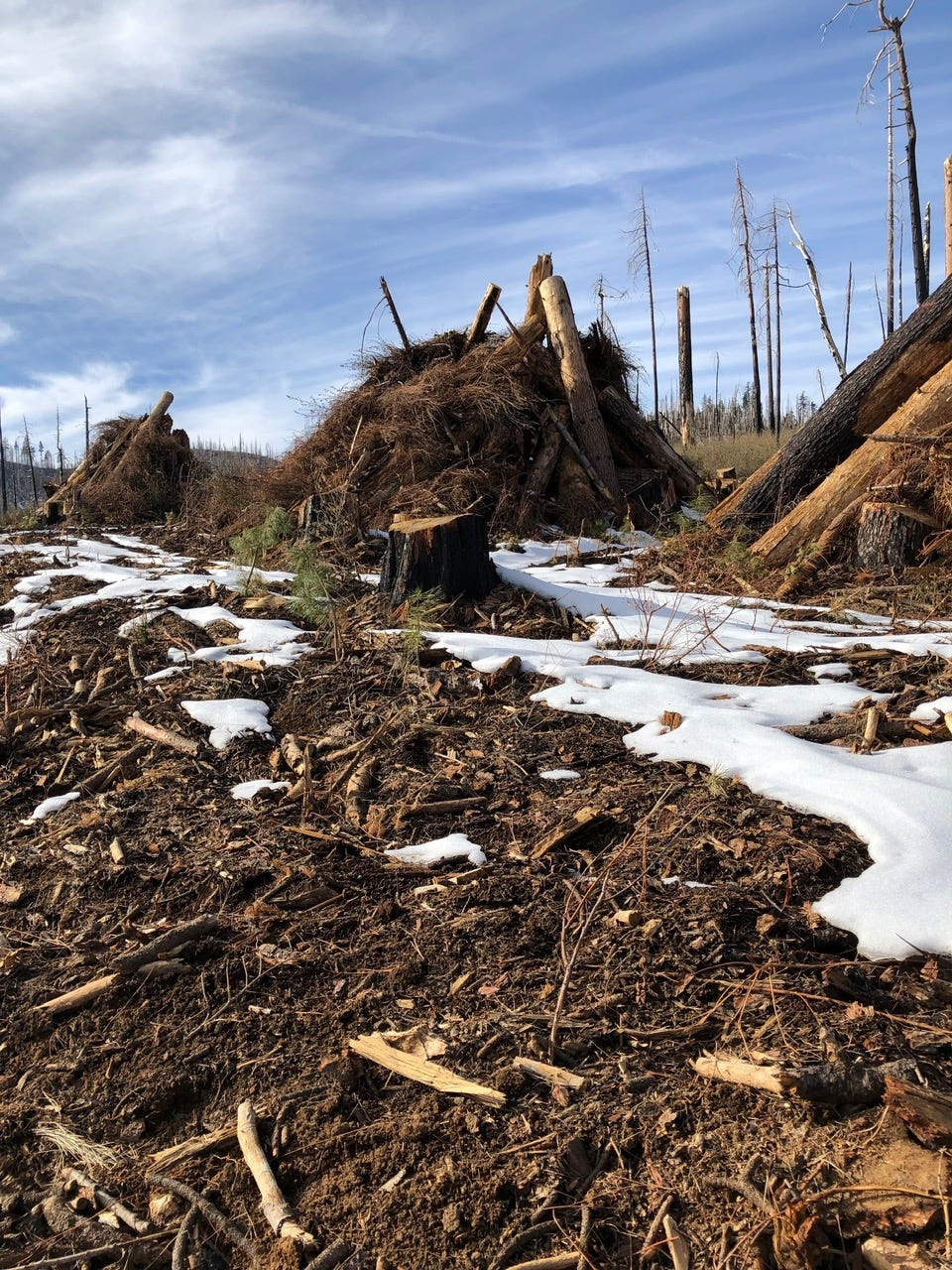
How much weight ought to be given to photos of a relatively small area of ground? When possible, I always prefer to visit an area and see for myself. And I know that the situation can change.
But Hanson isn’t just sharing a few photos or writing op-eds. I think the pending lawsuit will require the Forest Service to address his allegations. The complaint is 36 pages long, and you can download the PDF below. I’m not going to detail every part of it, but essentially it challenges what it says was a lack of analysis under the National Environmental Policy Act and claims impacts to wildlife and habitats, reduction and impairment of recreation opportunities, loss of young, naturally regenerating sequoia forest and more.
You may recall that Hanson authored an opinion piece published by the Los Angeles Times and others that challenges statements made by people aligned with the Giant Sequoia Lands Coalition, specifically:
• That "the evidence on the ground in the Nelder Grove and other burn areas contradicts the narrative that lower-intensity fire is the only good fire" and
• That "recent satellite imagery and ground surveys, indicates that the big 2020-through-2021 wildfires have killed about 8% of the sequoias, not up to 20%, as some have claimed."
I think it’s important for his challenge to be addressed by the Coalition, and I’m still hoping to be able to conduct promised interviews sometime soon.
Stay tuned!
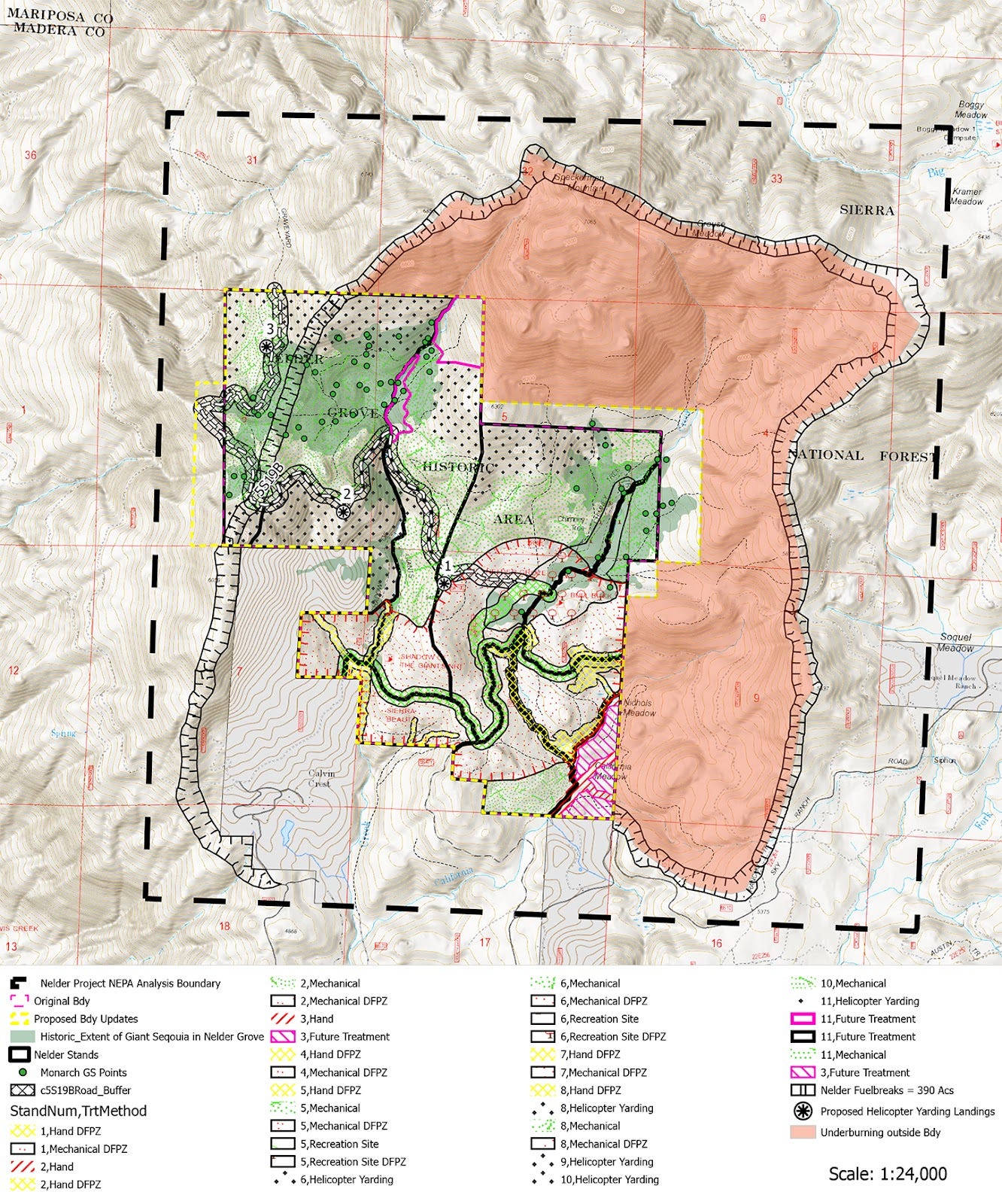
More information about the Nelder Grove Ecological Restoration Project can be found HERE. And here’s a copy of the complaint filed in the U.S. District Court, Eastern District of California, Fresno:
SEKI seeks public input
Sequoia and Kings Canyon National Parks have asked for public review and comment on an environmental assessment (EA) evaluating alternatives to restore giant sequoia groves and adjacent fisher habitat in areas severely impacted by the 2020 Castle and 2021 KNP Complex wildfires and where adequate regeneration is otherwise not anticipated.
The public review period for the EA began July 7 and will end on Sunday, August 6, 2023.
According to a notice from the parks, this review period follows the receipt of initial feedback from the public in February and March 2023. (I wrote about this HERE). The notice continues:
Under the preferred alternative, the parks would collect, grow, and hand plant sequoia and other mixed conifer seedlings in up to six sequoia groves. The parks would also plant conifer seedlings in a proposed critical habitat corridor of the endangered fisher.
The establishment of seedlings in these areas would point these groves and critical habitat toward recovery of their pre-fire forest species compositions, as they would have done naturally had they not experienced such severe fire effects during recent fires.
How to participate:
•Attend a virtual public meeting at 5 p.m. on Tuesday, July 25.
•Attend a site visit on July 21 or 28. Space for the site visits is limited; attendance is available on a first-come, first-served basis.
•Submit your comments online through midnight, Sunday, Aug. 6.
Details about this project and on how to participate are available on the NPS Planning, Environment, and Public Comment website at: https://parkplanning.nps.gov/MeetingNotices.cfm?projectID=107200
And more from the notice:
Following the public comment period, the NPS will consider all feedback to inform the next steps, which could either be selecting one of the proposed alternatives (or a variation of an alternative) for implementation or determining that additional analysis is necessary before making a decision.
Public input is critical to this process. If an alternative is selected for implementation following this public review period, the NPS will document the decision through a Finding of No Significant Impact (FONSI). The NPS anticipates a decision by fall 2023.
As I’ve previously reported, SEKI has had opposition to earlier related efforts. I’ll be writing more about this in upcoming editions.
Wildfire, water & weather update
Yes, the high temperatures arrived, as we knew they would eventually. The mercury will drop a little this week, but we still have a heat advisory in the range where giant sequoias grow. The best Sierra Nevada weather forecasts can be found at NWS Hanford, HERE, and NWS Sacramento, HERE.
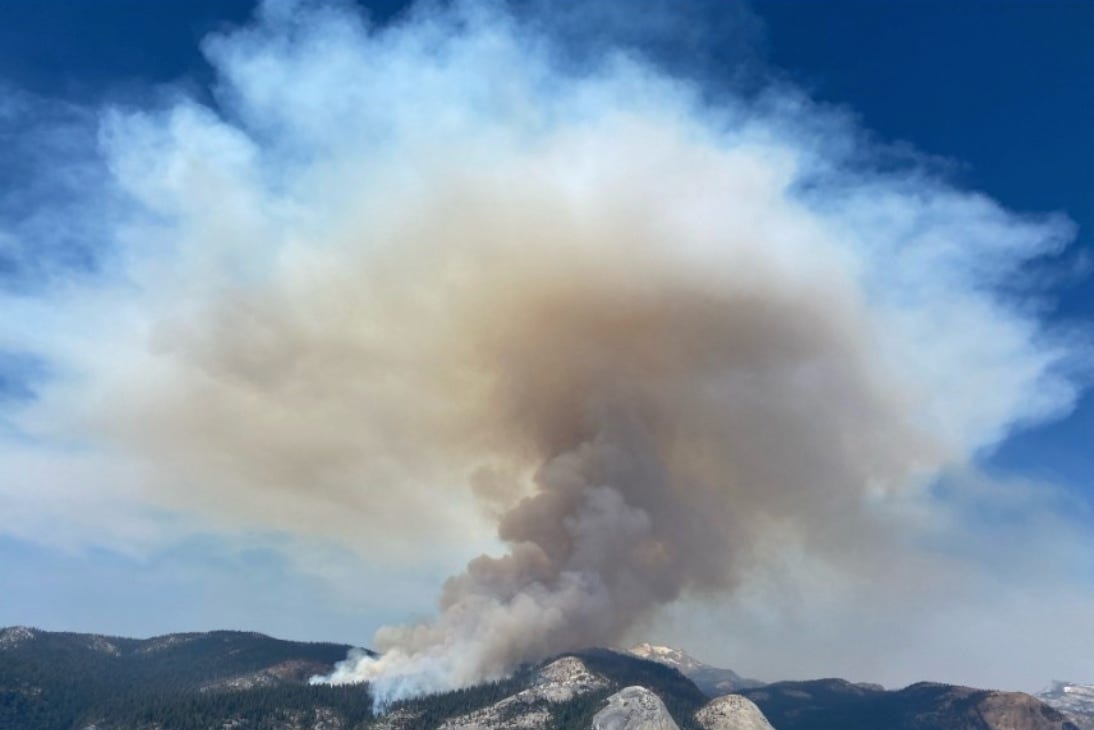
Wildfire update: I first wrote about the lightning-caused Pika Fire in Yosemite National Park on July 3 when it was less than an acre in size. WatchDuty this morning shows it as the second-largest active wildfire in California, but fortunately, it’s trailing way behind the largest — the 7,600-acre-plus Rabbit Fire in Riverside County — by quite a bit. The Pika Fire, as of the latest report this morning, was at 818 acres (0 contained) with 40 personnel assigned to it. It’s burning in timber and brush.
Trails in the area have been closed, and Yosemite crews plan to continue firing operations with both aerial and hand ignitions while monitoring weather and fire behavior, including smoke impacts (which are better this morning than they were yesterday afternoon) with a transition to patrol and monitor by mid-week.
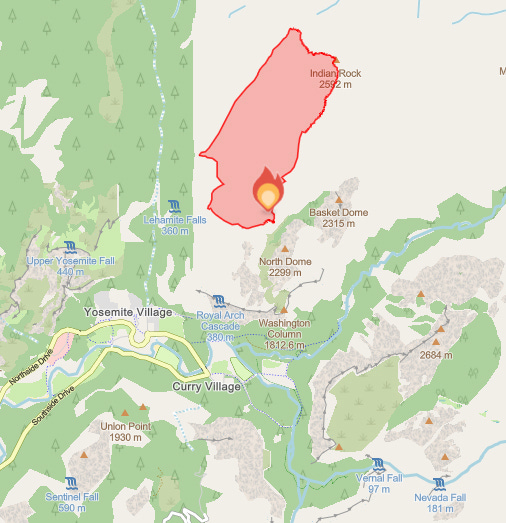
Here’s the federal Situation Report for today. The map below comes from this report. CalFire’s incident page this morning shows 3,370 wildfires this season, with 21,743 acres burned (about twice as much acreage as last Thursday’s report). The federal InciWeb system shows more HERE. And here’s a cool map that shows fires and air quality — warning, it loads very slowly.
And here’s an interesting article from CNBC about El Niño and the weather, and an excerpt:
In all of 2022, there were 18 separate billion dollar weather and climate disaster events, according to data from NOAA, including tornado outbreaks, high wind, hailstorms, tropical cyclones, flooding, drought, heatwaves and wildfires. So far, there have been 12 billion-dollar weather and climate disasters in 2023, according to NOAA.
Work continues throughout the Sierra Nevada to repair roads and infrastructure damaged during the heavy snow of winter and spring. Snow has been removed from Tioga Road, but repairs are still underway and may not be completed until next month.
Did you know you can comment here?
It’s easy to comment on items in this newsletter. Just scroll down, and you’ll find a comment box. You’re invited to join the conversation!
Giant sequoias in the news
• The California Climate Exchange is collaborating with the Hamerly Giant Sequoia Grove on Palomar Mountain in San Diego County with an afforestation and carbon sequestration pilot project. Read more HERE.
• Save the Redwoods League has published information and a video HERE about planting 53,000 new trees at Alder Creek. About 30,000 of the seedlings are giant sequoias.
• SFGate.com has a story HERE about the Pika Fire in Yosemite.
Historic photo of the week
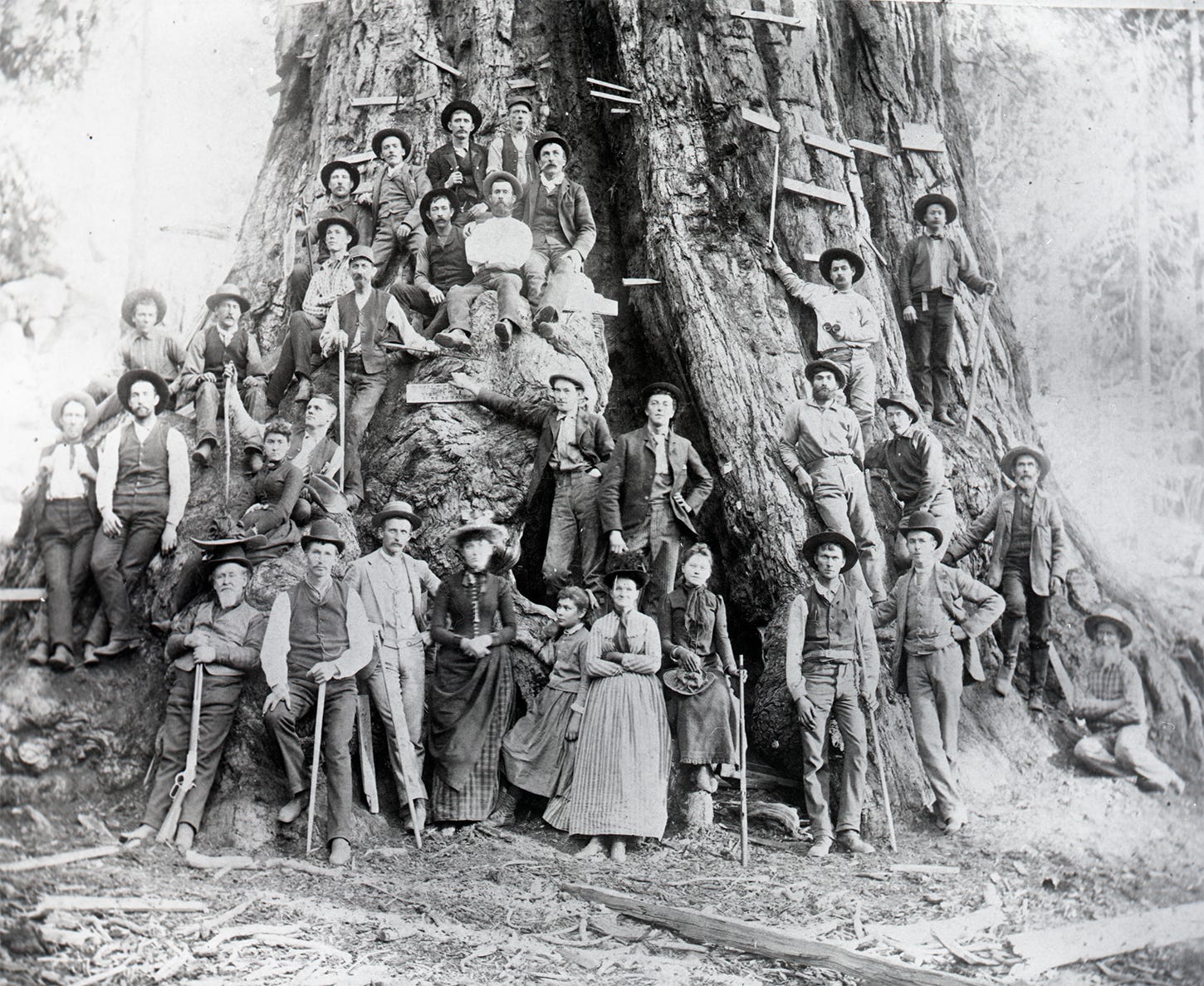
Thanks for reading!



